Sitia, one of the most beautiful places in Crete.
History and nowadays sightseeing of the extremely charming city having its unique distinctive style.
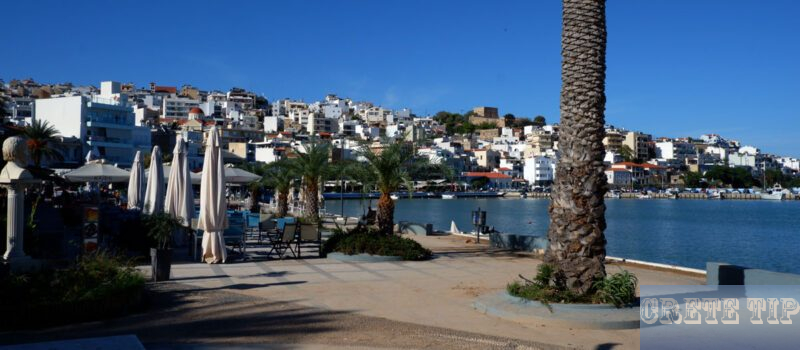
Sitia is one of the most beautiful, cleanest, cheapest, with many hotels and also animal friendly cities in Crete. Much like an amphitheater built on the back of the hill of the same name, recalls the town to places in Italy.
History of Sitia
Table of Contents
That is not so very surprising, since the region was under Italian influence during the expulsion of the Turks and the reconstruction of the city in the late 19th century, and during the Venetian period in the Middle Ages, as well as during the occupation in WW2.
It’s not totally sure that ancient Iteia or ltis, the port of Praisos, had been in the exact location of actual Sitia. The French archeologist Basouquet is certain that the ancient city had been on the mountain / hill where the neighborhood of Petra is nowadays, due to the fact a portion of a Minoan village was discovered there during an excavation in 1901.
Anyway, the area should have always been populated as is proven by Postpalatial and Neopalatial tombs, Hellenistic and Geometric sculptures, Roman remains as well as an Early Christian basilica.
When the old city of Ierapetra defeated Praisos in 146 B.C. the population scattered, a lot of them getting refuge in the port of the city, Iteia. After that it started to expand into a strong, self-governing city having its unique coins.
The city existed all subsequent time and the Venetians had great plans for it in the 14th century. They fortified the old town and the extended the fort which was taken from the Genoese. In 1508, however, an earthquake put a lot of houses in ruins and the city was finally destroyed in 1538 by the Turkish pirate Barbarossa.
In 1651 the Venetians, confronted with the rising Turkish hazard, evacuated the residents to Liopetro. Sitia failed to exist for the following two hundred years. It was re-inhabited in 1870 by the Turks. In 1897, it was besieged by Cretan rebels and finally occupied by French forces.
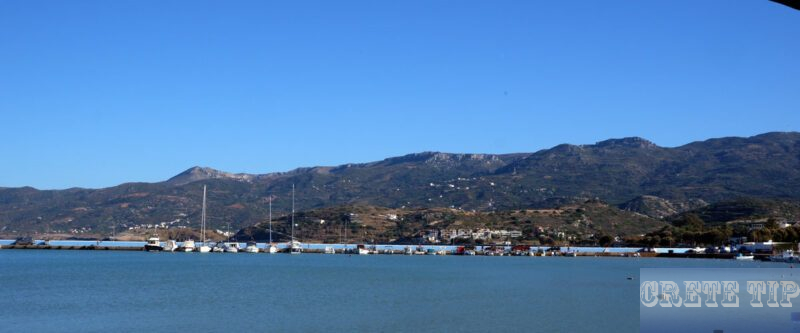
Sitia today
Nowadays, established as it is along the side of the hill, Sitia is extremely charming having its unique distinctive style. Alongside its wonderful strand lined with tree heather you may still find traditional stores beside new ones.
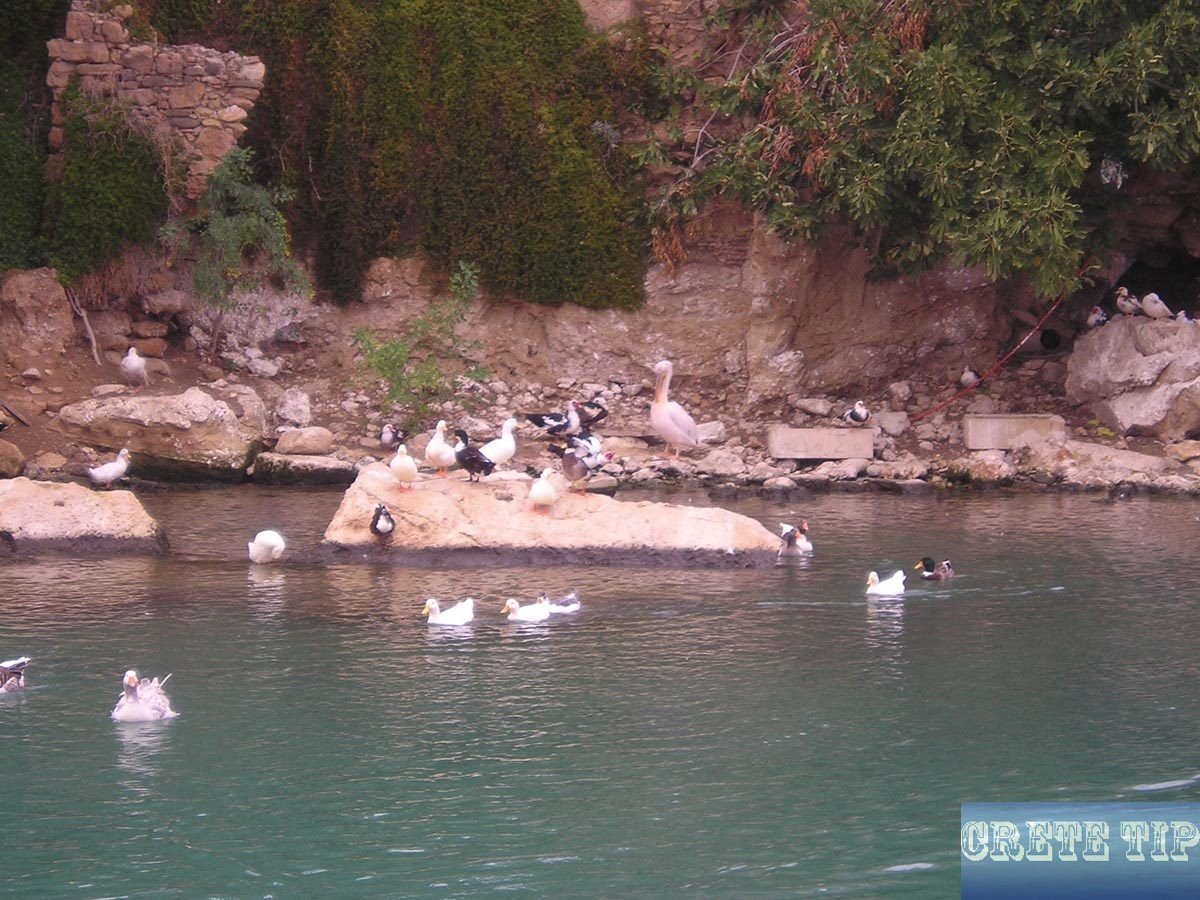
On the promenade north of the center – in the direction of the large ferry terminals – are the remains of Roman fish tanks. Freshly caught fish was kept there until consumption. The water tanks were now integrated into an artificial pond along the concrete promenade and is populated by colonies of swans, ducks and geese.
To the east and north of the city there are beautiful beaches for swimming. The town beach is surprisingly nice, with sand and beautifully clear water. It runs far to the east of the city away and is therefore rarely anywhere really occupied.
The Archeological Museum of Sitia had been established in 1984. Inside a huge gallery are exhibited discovers coming from all the times within the province of Sitia, primarily from the location of Mochlos, Ayia Photia, Mochlos, Zakros, Palaiokastro and Pseira, with an information guide to support the guest.
The most significant exhibits are: a wine-press, figurines, tablets in Linear A, early Minoan vases, vases from the Palace of Zakros, a flour mill from the Hellenistic period, Graeco-Roman objects, and more.
Additionally, there is a Folklore Museum in Sitia having great collections of local costumes, weaving, furniture, embroideries, looms, household items, and many others.
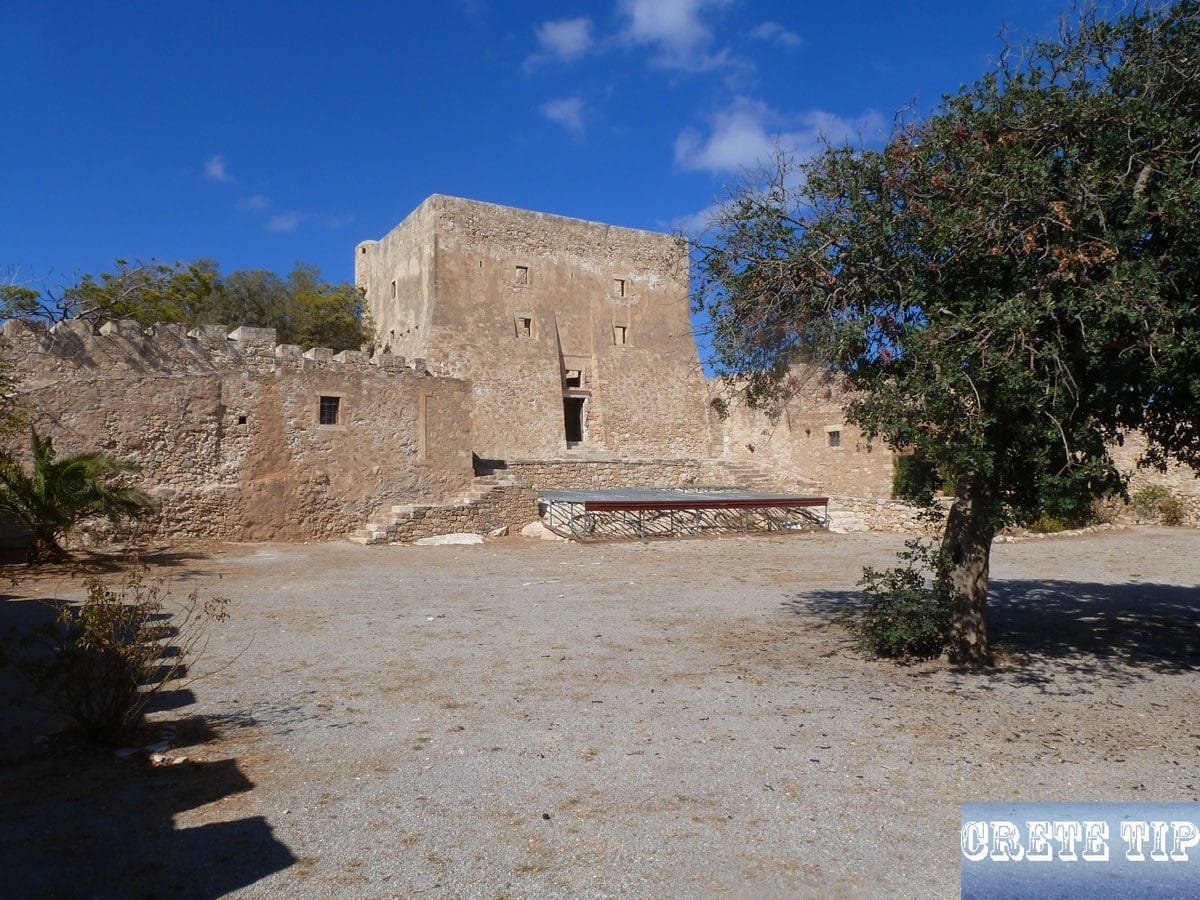
The Venetian fortress ‘Kazarma’ (Italian ‘Casa di Arma’) prevails over the old town. Unfortunately, inside it has been destroyed and gutted largely, why it is often used now for open-air theater, concerts and exhibitions. Anyway, the view from the battlements is magnificent.
The city was also the birthplace of one of the most important writers of Crete. Vitzentzos Kornaors wrote at the end of the 17th century the epic ‘Erotokritos’, the most famous work of ‘Cretan Renaissance‘.
More pictures from Sitia:
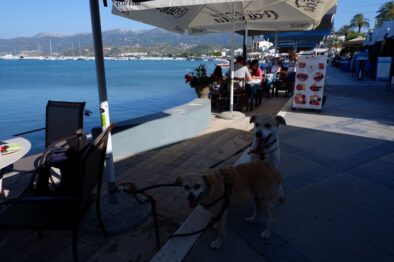
Folklore Museum
The Folklore Museum offers an entertaining insight into the traditional life of Cretans. There are displays of antique furniture, costumes, kitchen utensils and ceramics from the region, but especially textiles and embroidery.
There is also a working loom where museum staff demonstrate how to work it. The finished pieces can be purchased in a small shop in the museum.
Archaeological Museum
400 metres south of the centre on Ierapetra Street is the Archaeological Museum of Sitia, founded in 1984. It is open Tuesdays to Sundays from 9.30am to 4pm and admission cost €3.
Eastern Crete is rich in ancient mountain sanctuaries, Minoan villas and country houses. Many finds from these sites, as well as from the palace of Zakros and from excavations in and around Sitia, are on display in the modern building.
The museum’s greatest treasure, the Palekastro Kouros, can be seen as soon as you enter the museum. This small figure of a man is an extremely intricate work dating from around 1500 BC, made from eight interlocking pieces of hippopotamus ivory. When completed, it would have been decorated with a gold Minoan belt, bracelets and shoes. Note that the left leg is slightly forward in accordance with Egyptian convention for depicting his statue form.
To the left of here is the main room, where finds from the Early Minoan cemetery at nearby Agia Fotia are on display, as well as some fine stone vases from Mikholos and its neighbouring island of Psira. There are also more recent finds from Petras, the southern suburb of Sitia, where important buildings from the Minoan New Palace period have been excavated. Huge pithoi (clay vessels) were stored in a large building there, many of which are displayed around the museum.
The Zakros section includes a bronze coffin and a wine press from a Minoan villa near the palace. Here, too, there is a display case full of tablets with Linear A characters found in the archive room of the palace, on which Minoan characters have been delicately carved into soft clay. Some show signs of having been attacked by the fire that destroyed the palace. It was only through the fire that they were also preserved, so they have survived into our own time, otherwise they would have crumbled to dust long ago.
A nearby display shows the kitchen, so far the only one ever clearly identified in a palace. It consists of an excellently preserved terracotta grill that was probably used to cook a type of early souvlaki. This type of cooking had been known in the Greek world since pre-Mycenaean times and was also mentioned by Homer.
There is still a Hellenistic section with a grain mill and a Roman section. In front of the exit is a tangle of Roman pots encrusted with barnacles, which probably came from a wreck and are preserved in a fish tank with salt water.
Palace of Petras and the Venetian Tower
About 1 mile (1.5 kilometres) east of Sitia is the Minoan Palace of Petras. Right next to the access area are the remains of a small Venetian watchtower, built at the end of Venetian rule around the 16th/17th century. It was intended to ensure visual contact between the fortress of Kasarma above Sitia and the settlement of Liopetro. The tower originally had two levels and dome-shaped roofs, which were connected by a stone staircase.
The Hellenistic Sitia Trypitos
1.2 miles (2 kilometres) east of the town off the main coastal road is a signposted path marked as an ‘Archeologial Site Trypitos’. It leads about 100 metres to an agricultural building where you can park.
Here are the recently discovered substantial remains of Hellenistic Sitia (Choros Ellinistiki Poli Tripitou), dating from the third century BC and later. The remains excavated so far include easily identifiable ruins of dwellings, rooms and streets, and the ongoing excavations will undoubtedly bring more to light in the coming years.
Minoan cemetery
Agia Fotia is about 2 1/2 miles (4 km) east of Sitia. In 1971, the largest Minoan cemetery ever found on Crete was uncovered near the sea at the edge of the village of Agia Fotia. However, nothing of this can be seen today.
More than 250 chamber tombs from the early pre-palatial period came to light. Among the outstanding finds of vases, fish hooks, daggers and stone axes were a number of lead amulets, indicating that these early Minoans considered lead a precious metal as well as silver. The pieces are now on display in the archaeological museums of Sitia and Agios Nikolaus.
Horse club near Sitia
Only about 2 1/2 miles and 8 minutes drive by car is the horse club of the ‘Friends of with horses in the here and now‘ of Andrea Patrizia Wiener-Angelakis with old Greek breed horses.
Visitors with and without horse experience are welcome (by appointment – phone ++30 698 190 6761)!
More info: Friends of ‘With horses in the here and now’
How to get there: Directions Horse Association Sitia
Hotels in and around Sitia
Overview of available hotels in and around Sitia at the best price!
Video about Sitia
Directions to Sitia
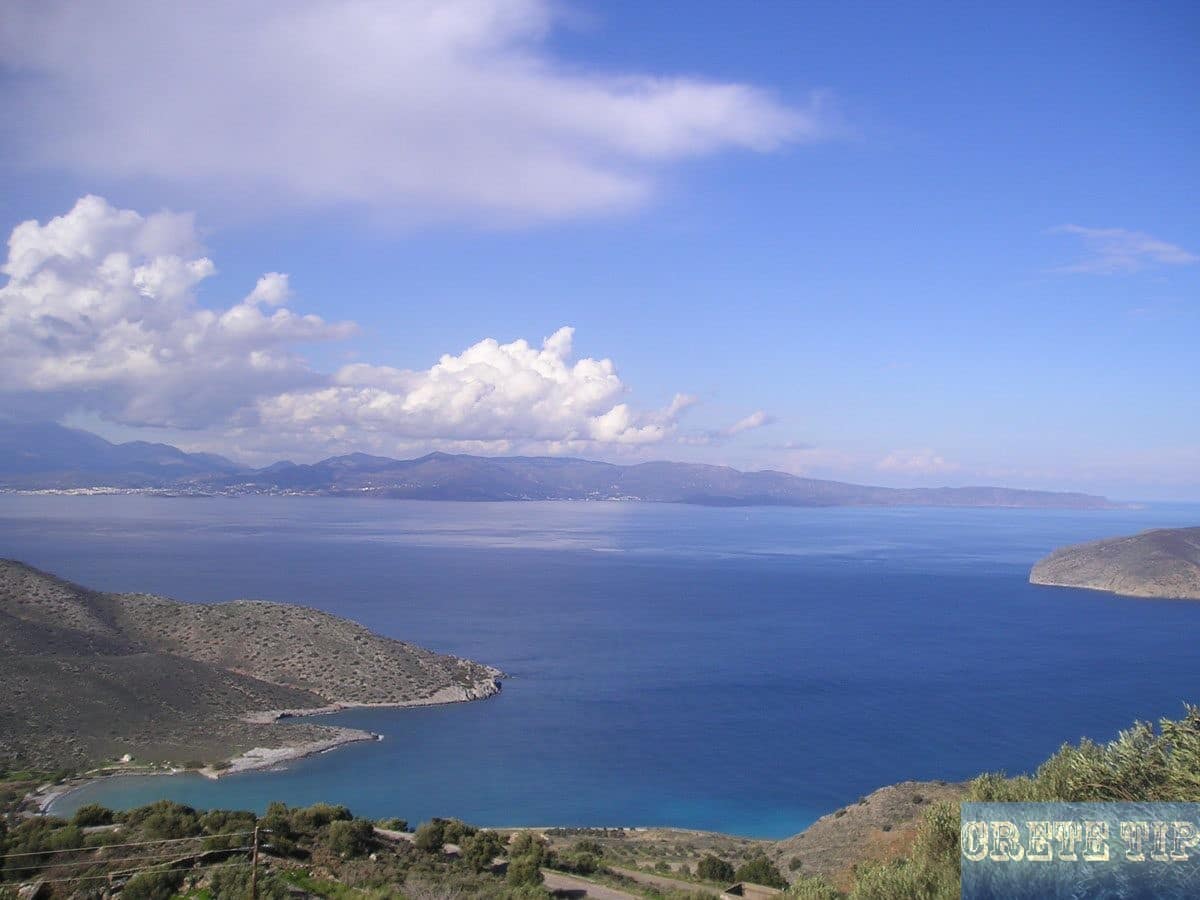
Even the trip from Aghios Nikolaos to Sitia along the coast is spectacular and justifies the visit!
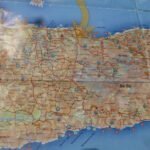
Click here: Directions Sitia.



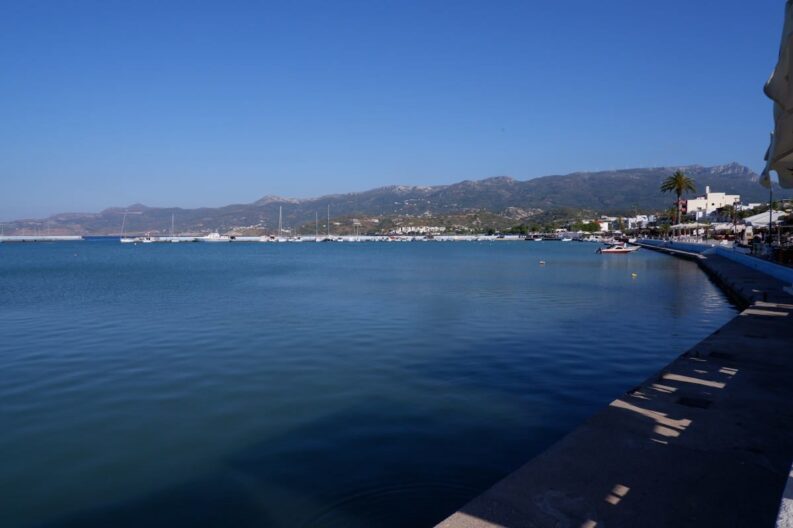
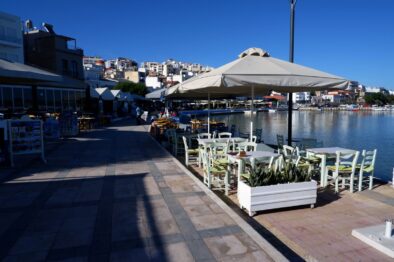
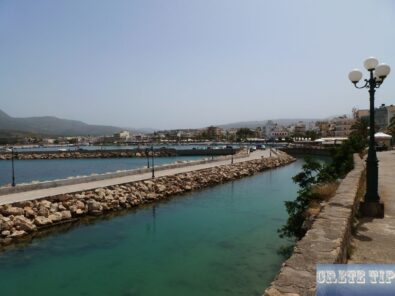
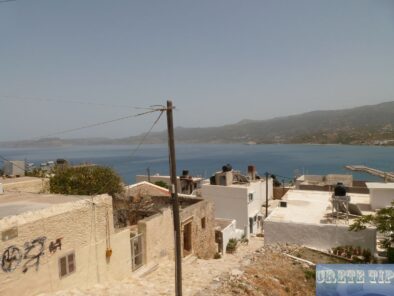
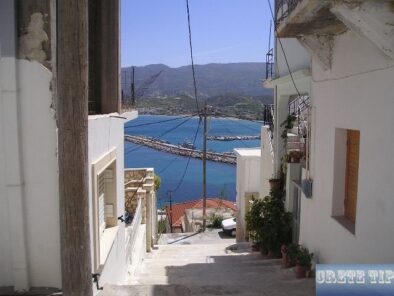
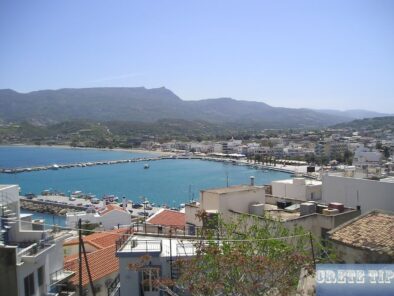
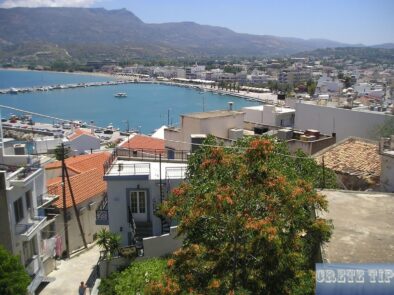
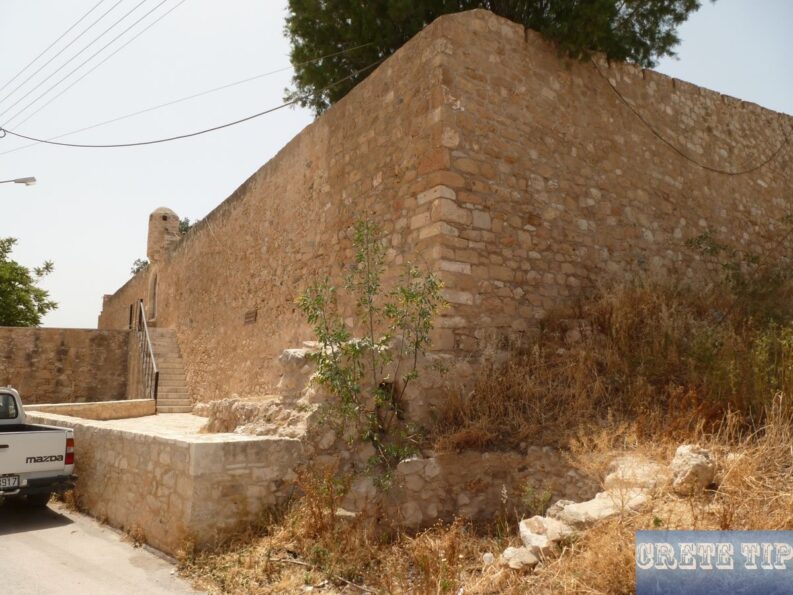
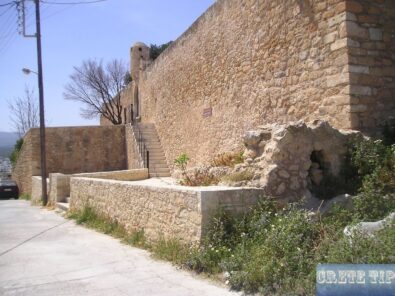
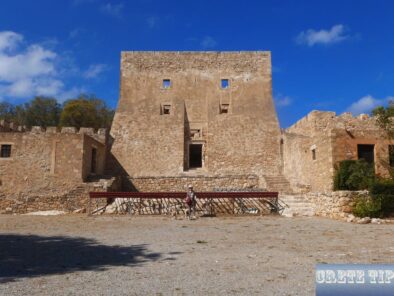
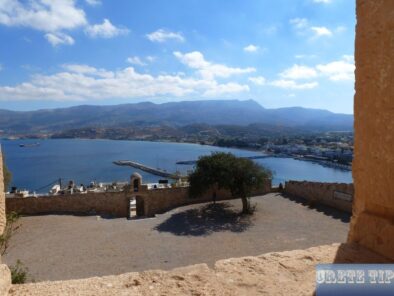
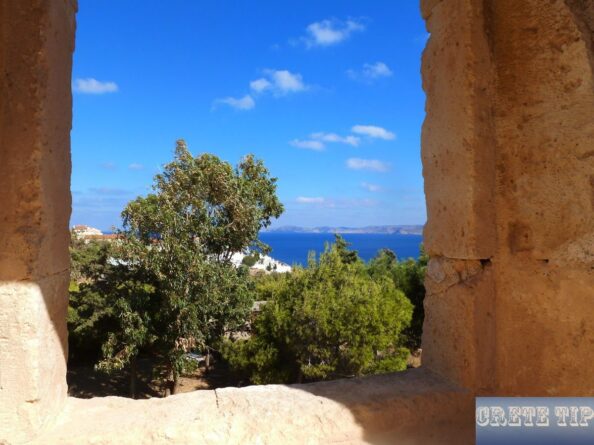
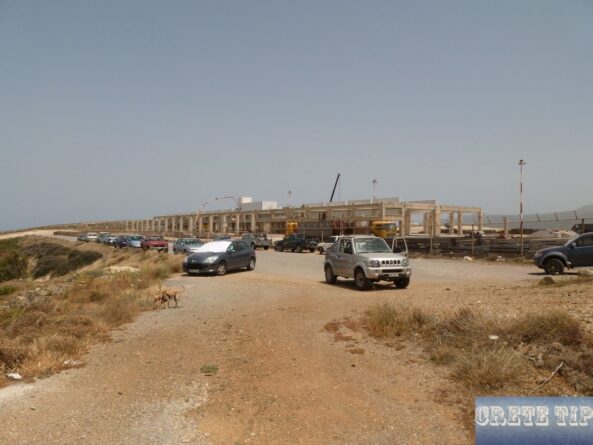
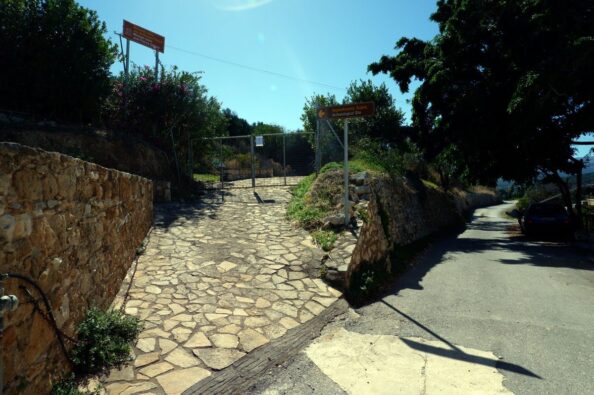
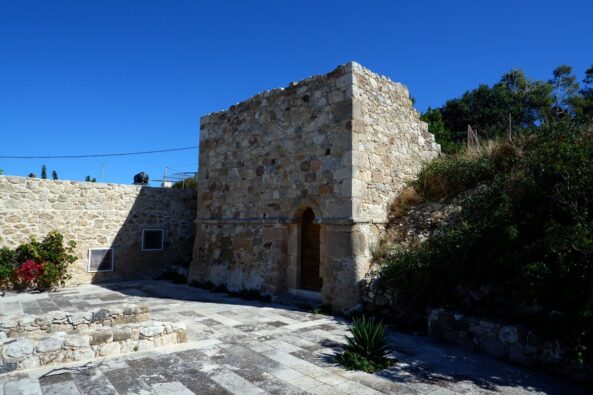
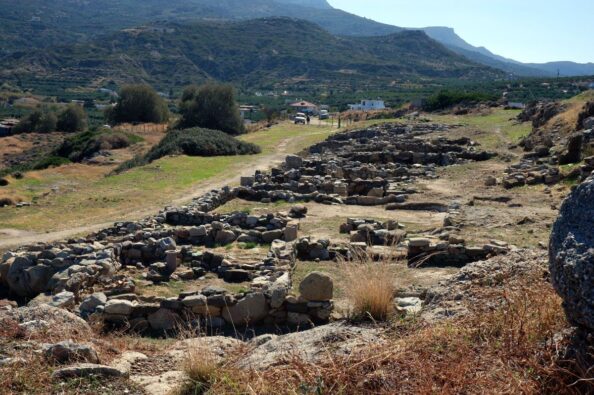
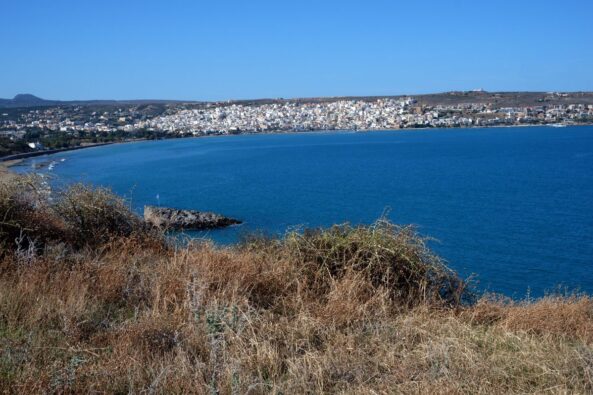
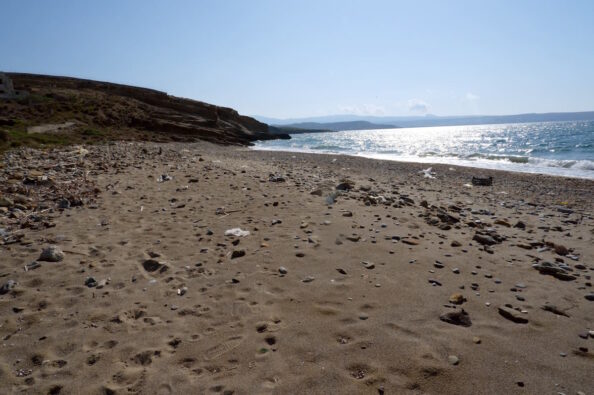
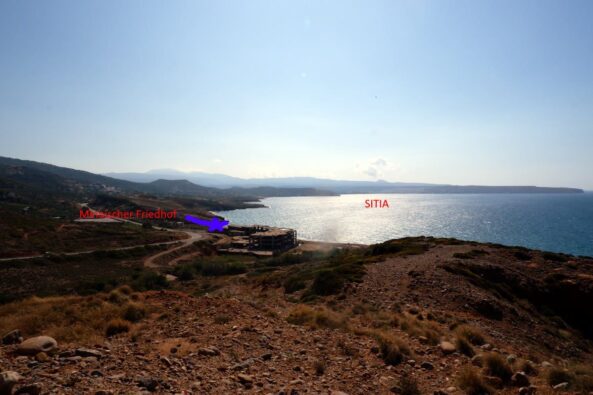
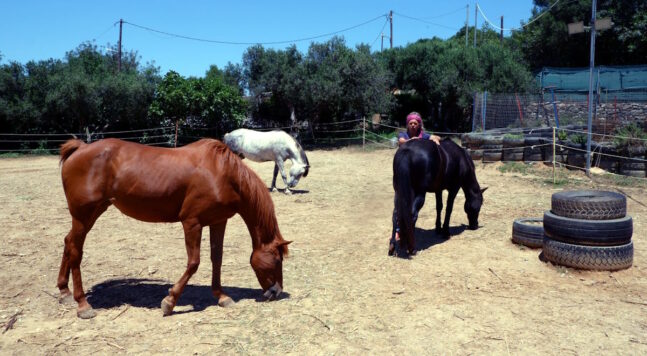
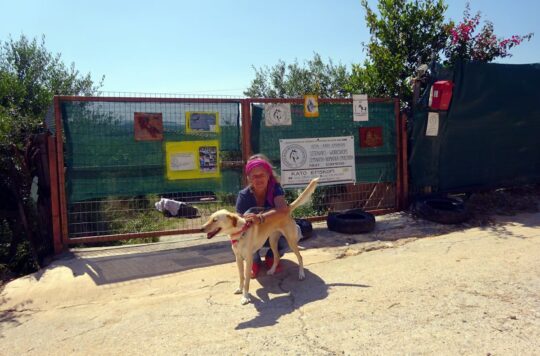
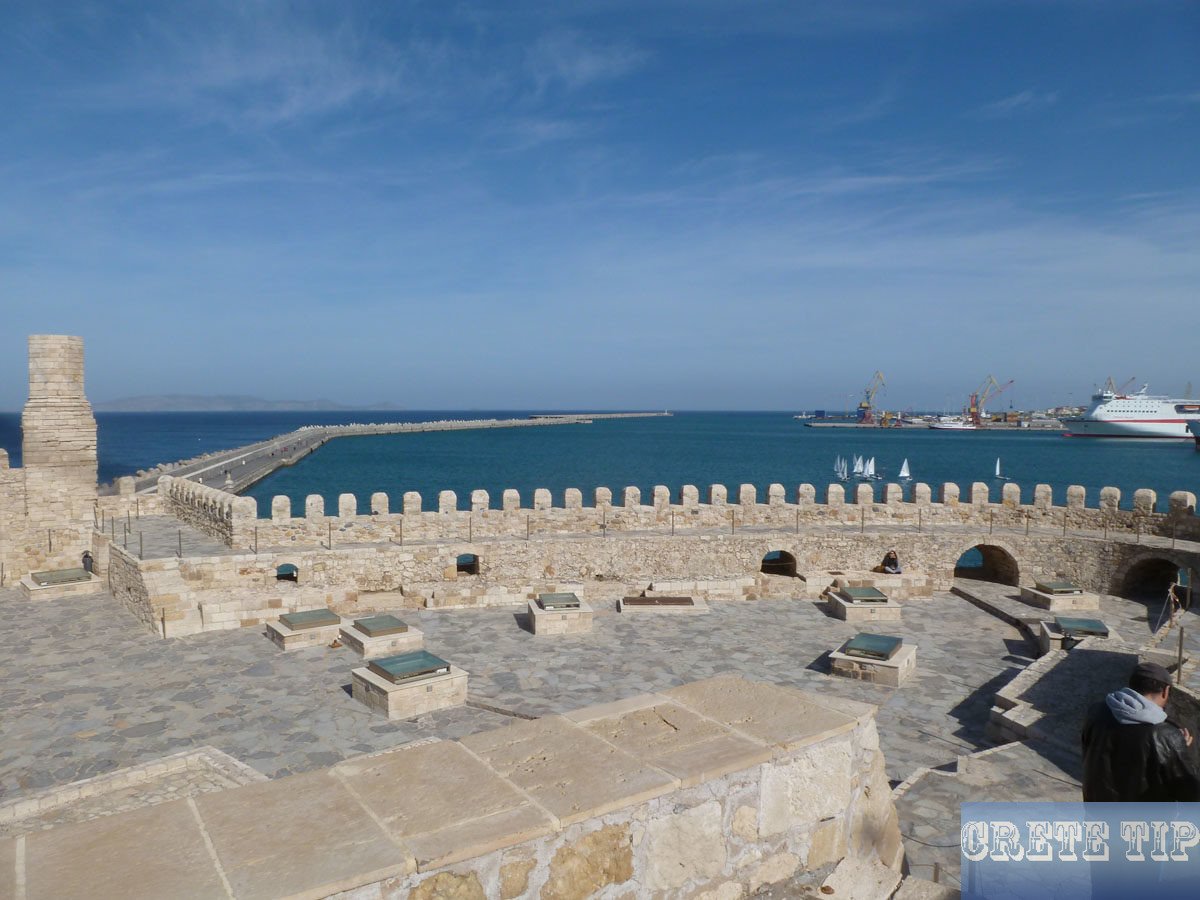
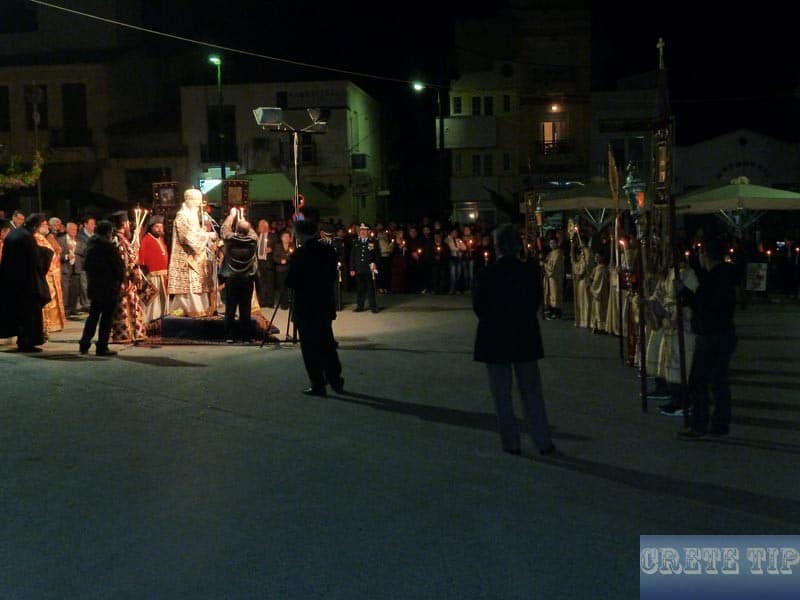
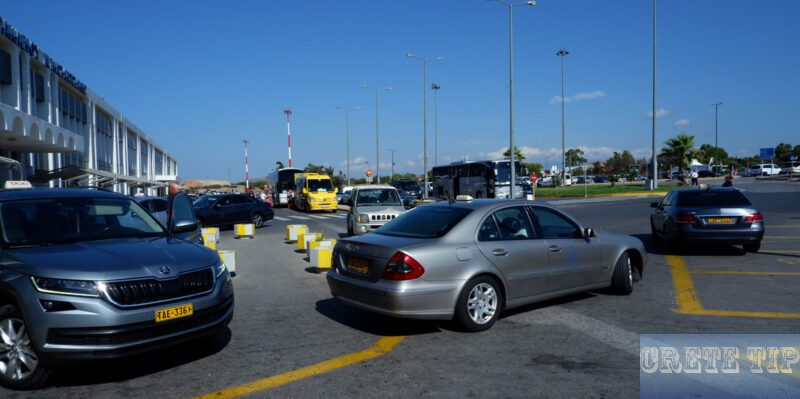
Too many stray dogs and cats. The dogs and cats roam in and out of all the restaurants – the dogs poo on the beach and pavements , and I have been attacked 4 times by packs of up to 8 dogs in the town centre. Horrible.